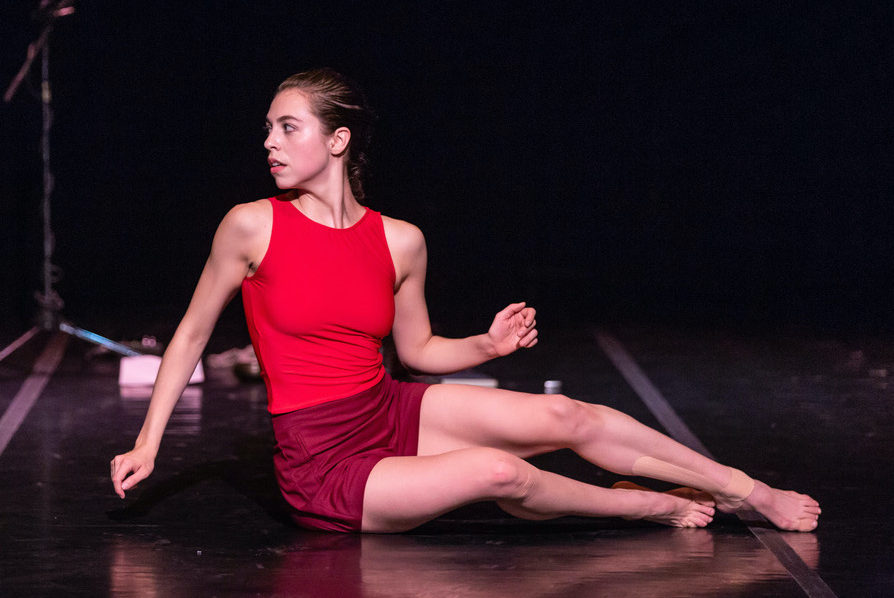Variations on a Theme: Artists-in-residence at three Canadian companies - Vancouver Ballet Society
- Home
- Features 2020 - 2023
- Variations on a Theme: Artists-in-residence at three Canadian companies

By Rachel Silver Maddock
Moving into an independent career is a big shift, and three of Canada’s high-profile dance companies — Ballet BC, Les Grands Ballets Canadiens de Montréal, and the National Ballet of Canada — offer artist-in-residence positions to support former dancers in transition. Though the role at the three companies varies, the overall goal is the same: to assist artists with their career goals beyond company dancer.
Ballet BC’s AIR (Artist-in-Residence) program was formed in 2013 under former artistic director Emily Molnar to allow artists the chance to collaborate, choreograph, and pursue artistic leadership within Ballet BC. AIRs, who are invited into the role by the artistic director (Medhi Walerski since 2020), receive in-kind studio and theatre space, and marketing and administrative support, and are expected to mentor two of the company’s Emerging Artists.

Vancouver-based Dance//Novella is one of two recipients this season (the other is former Ballet BC dancer Rachel Meyer). Racheal Prince and Brandon Lee Alley, the former Ballet BC dancers behind Dance//Novella, say the networking aspects of AIR have been invaluable. Artists are given complimentary tickets to Ballet BC shows and included in company events. Staying in the fold, so to speak, allows them to discuss their work with the established network of supporters, presenters, and collaborators that Ballet BC maintains, which can feel out of reach for independent artists.
“Having a company like Ballet BC stand behind us gave other people the trust in us to do artistic projects,” Prince says. “It’s strengthened our applications [for government grants] and we’ve had a lot of success with funding this year.”
Dance//Novella was already fairly established when they were offered AIR (the company was founded in 2019), but Prince says for independent artists starting out, getting to take company class would be a lifeline: “Just to have a group of people to say hello to every day is the most amazing thing.”

Les Grands Ballets Canadiens de Montréal, who hasn’t had an official artist-in-residence program for decades, held an open call for residencies in 2021 to share their resources with local individuals and companies. In partnership with Conseil des arts de Montréal, the company gave 15 recipients 40-80 hours of studio space for creation and production in studios or the studio theatre. Former company corps de ballet dancer Diana León was one of the selected artists-in-residence, and she used the time to lay the groundwork for a new piece, Surrealist Exiles, with Vías, a company she co-directs with Paco Ziel.
At Les Grands, former company dancers are able to maintain a working relationship with them whether or not they are artists-in-residence. They can still take morning class and some do return to perform on a contract basis, to fill in for dancers with injuries, or to supplement numbers for works requiring a larger cast. León left in 2019 but has returned to perform three times, including a tour last season.
“I feel like I left but the door stayed open,” says León. “We keep track of each other, I keep track of what [the company is] doing and they keep track of what I’m up to with my projects. I’m really grateful for that.”
At the National Ballet of Canada in Toronto, there has only ever been three artists-in-residence – all former star dancers. The first was Karen Kain (an internationally acclaimed ballerina who went on to be artistic director from 2005-2021), followed by the two who currently hold the title: Rex Harrington (artist-in-residence since 2006) and Greta Hodgkinson, who retired in 2020 and assumed the role the same year.

Hodgkinson, a former principal of 30-year tenure at the National, says that her role as an artist-in-residence is still being worked out. “It’s a title that can encompass a lot of different responsibilities within the company, and will allow me to grow and develop other aspects of myself as a professional and as an artist,” she says. So far, she has coached, rehearsal-directed works, and mentored dancers in repertoire she knows intimately, like Swan Lake and The Nutcracker. She also has access to studio space, and can continue to take class with the company.
Though starting during the pandemic was not easy, Hodgkinson says moving to her new role has helped with the transition away from principal dancer. “There’s a lot of room for growth and for new responsibilities. I’m looking forward to seeing what the role entails,” she says. She is now striking a balance between artist-in-residence responsibilities, running her own mentorship business, and doing independent dance work.

